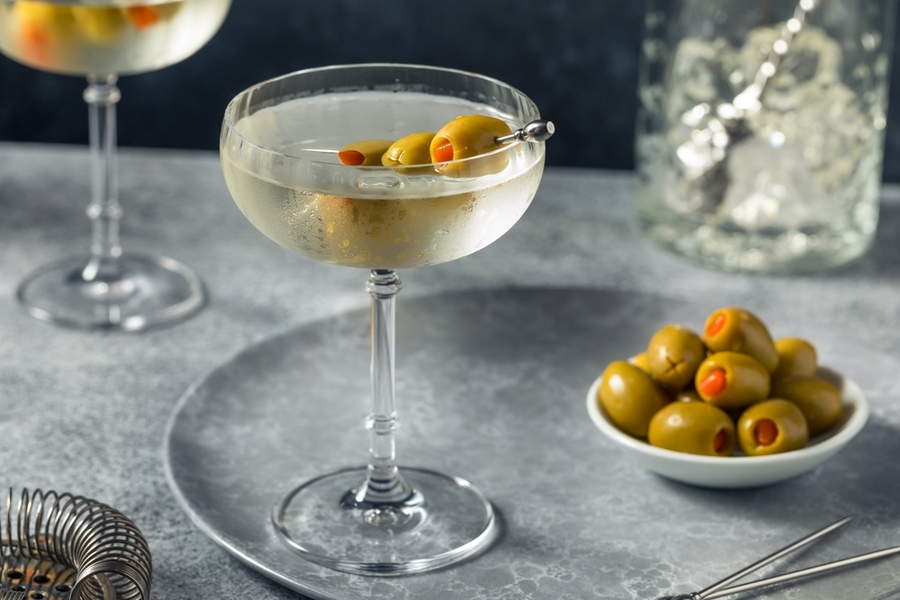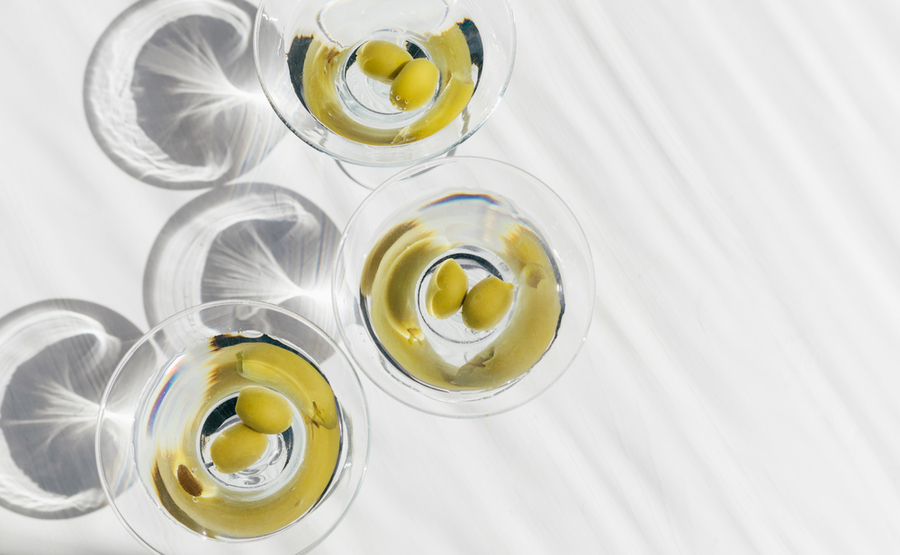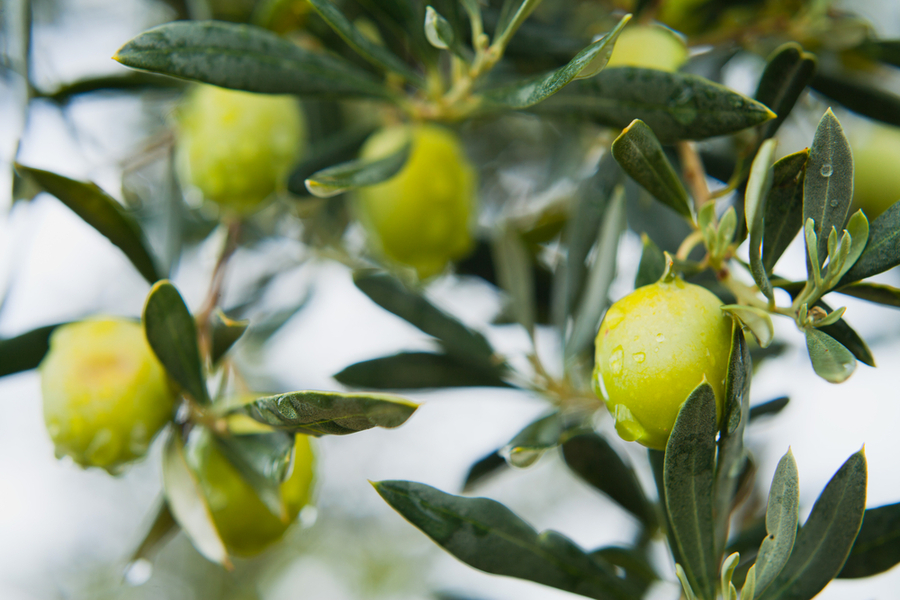
The Martini is perhaps one of the most iconic cocktails you can serve at a cocktail party. Some like it stirred, others shaken.
Whichever way you like it, an olive is one of the essential elements. And not just any olive will do either, thank you very much. You are probably asking yourself, what kind of olive should I use for my Martinis?
Not all olives are created or prepared equally. The same goes for the olives you use in a Martini. The ultimate olive for Martinis is Castelvetrano olives because they keep their shape and crispness when you add them to your cocktail. Their smallish size also doesn’t draw attention from the cocktail.
If you’re after an olive that will make a bold size statement, Spanish Queen and Spanish Manzanilla olives are the way to go. The Greek Frescartano olive is a special one prepared in the same style as Castelvetrano olives, retaining their crispness and buttery taste.
We’ll briefly examine the legends surrounding the origin of the Martini cocktail before moving on to why you’ll find an olive or three skewered in your Martini. Finally, we’ll give you the top five olives for Martinis and tell you what makes them so unique.
A Little Bit of Martini History

The prevailing legend tells of a miner who struck it lucky during the California Gold Rush. He celebrated his success in a bar in Martinez, California, and asked the bartender for a special celebratory drink.
The bartender obliged and put together a drink with what he had behind the bar—fortified wine (vermouth), gin, and a few other goodies. Thus, the first ‘Martini’ (or, as it was called back then, the ‘Martinez’) was born.
The same miner moved on to San Francisco and asked for a ‘Martinez Special.’ Still, the bartender had never heard of it, but the miner shared the recipe with him, and the cocktail was finished with an olive.
Author Barnaby Conrad III wrote a book on Martini’s history. He claims San Francisco is the original birthplace of the cocktail. Another claim is that a bartender invented it in 1911 in New York.
How can you mix up a decent Martini without vermouth? And most of us know Martini’s vermouth. Some claim the Martini is named after the vermouth, which is used to create the cocktail; not entirely unlikely because Martini is an Italian surname, but we’ll never know the truth.
What’s Up With the Olive?

Let’s start at the beginning. What’s up with the olive? Why is there an olive in my Martini?
Nobody knows how the olive ended up in the drink, where the drink came from originally, or who invented it.
The olive garnish is even more difficult to pinpoint than the Martini’s history. Remember the San Francisco bartender who put an olive in the drink as a garnish?
Maybe it was him when the miner relayed the recipe to him. Maybe not. NPR’s correspondent Deborah Amos recalls an interview with Dr. Ammar Martini, a Syrian Red Crescent rehabilitation hospital member on the Turkish border.
While Deborah and Dr. Martini chatted, she remarked that Martini was an unusual surname in that part of the world. He responded that there are families with the last name Martini in northern Syria.
According to Dr. Martini, his grandfather went to Paris to run a bar and café after the French occupation between 1920 and 1946 ended. The grandfather’s contribution to the drink was to place an olive in the glass as a garnish and as a homage to the Idlib province in Syria, which he came from and is also famous for its olives.
This is a nice story, but perhaps not entirely true.
We don’t know why Martinis are garnished with an olive. Maybe a bartender ran out of (green) maraschino cherries and, out of desperation, used an olive. Or, perhaps, it is a twist on the Gibson cocktail, which is garnished with a cocktail onion instead of an olive. We just don’t know.
What Kind of Olives for a Martini?

Now things will become a bit trickier. You’ve spent years finding the perfect gin (or vodka) and vermouth combination. So why skimp on the olives?
Unless you just like drinking Martinis and don’t care about the olive (what is wrong with you?), you can skip this part, but we don’t want to lose you, so please stay.
The olive brings umami and salt to the cocktail and acts like a bridge between the different flavors of the drink. So, let’s investigate the best options when mixing pre-dinner Martinis for your next dinner party.
Castelvetrano Olives
Also known as Nocellara de Belice, these beautiful pale, straw-green green olives perfectly complement a Martini. The olives are not fermented but rather bathed multiple times in a water-and-lye solution for two weeks to remove the bitterness sometimes associated with olives.
The bathing process leaves an olive with a buttery-sweet flavor. Castelvetrano olives are harvested while young but ripe and bursting with color.
What makes them great?
Their smallish size means they don’t take much space in the cocktail glass, letting the cocktail speak for itself. They hold their firmness and stay crisp even after submerging in the cocktail.
They can be pitted or unpitted, and the brine is mild. What’s more, they are PDO or have a Protected Designation of Origin certification.
Brands to look out for:
- Pitted Castelvetrano Olives
- Divina Castelvetrano Pitted Olives
- Eat Prime Foods Castelvetrano Sicilian Green Olives
Spanish Queen Olives
The go-to olive for Martinis. They have a typical green olive taste combined with fleshy fruit and keep their firmness.
In Spain, they’re also known as the Gordal (‘the fat one’) olives and are typically grown in Andalusia, near Seville. Initially, they were marketed as ‘Queen’ olives in the US, and the name stuck. The olives are harvested by hand to avoid scarring and bruising the fruits.
What makes them great?
They are THE Martini olive. The olives are brined in a sea salt and water mixture giving them a bold, almost bitter taste. They’re great for stuffing with pimiento, red pepper, or jalapeño.
Brands to look out for:
- Collins Gourmet Pimento Olives
- Delallo Stuffed Queen Olives
- Collins Gourmet Blue Cheese Olives (for a gourmet twist and a delicious Dirty Martini)
Spanish Manzanilla Olives
Sometimes life is unfair, and you cannot get Queen Olives. Manzanilla olives are an excellent alternative to Queen olives, although they’re slightly smaller and less firm.
What makes them great?
They are an alternative to Queen olives, and their slightly nutty taste will add an extra layer of flavor to your cocktails.
Greek Frescartano Olives
This is a brand new type of olive launched and trademarked exclusively by Divina and is a Halkidiki olive variety that hails from Greece. It is unfermented and unpasteurized (don’t worry, the brine kills anything nasty).
You can expect a mild flavor that’s sweet, buttery, fruit, and crisp all at the same time.
What makes them great?
Frescartano olives are produced in a similar style to Casterlvetrano olives and forgo the fermentation stage to retain their unique taste and vibrant color. This is one of the most challenging curing styles when producing olives, but the taste is rewarding.
Brands to look out for:
Vermouth Brined Olives
Grown in California, these olives are brined in vermouth. They are the perfect accompaniment to a gin Martini—talk about enhancing the vermouth in your cocktail!
What makes them great?
It is the perfect nod to the classic dry Martini, and these unstuffed olives will bring out the best in your cocktail. The olives are slightly flavored with juniper berries and coriander adding a palette of flavors to your drink. The brine is perfect for a Dirty Martini as well.
Brands to look out for:
Apart from the options we’ve listed above, there are other variations on the olive theme you can also try by reading about them here.
Some Olive Tips to Ensure Perfect Results

- Seek out green olives that are preserved in brine and not oil. Whether you like your olives pitted, unpitted, or stuffed depends on what you and your guests like.
- Check the ingredients to ensure your olives are preserved in pure brine without additives like corn syrup or artificial colorants.
- Buy the best quality you can afford and experiment with different types of olives and brands until you find the one that perfectly complements your tastes.
- Always keep olives in the brine to ensure they don’t dry out.
- Make sure the olive is firm when you skewer it—nobody likes fishing bits of olive out of their Martinis… You’ll also lose the visual appeal of the drink.
- Traditionally a Martini is served with one or three olives in the drink. According to bar lore, it is considered unlucky to serve an even number of olives. If you’d like more olives, order them on the side, or mix up another Martini.
- If you have three olives, follow the following tip: the first olive is eaten with the first sip, the second sometime during your cocktail, and the third is eaten with the last sip.
- Suppose you’re using the olive purely as a garnish (we’re not judging here). In that case, you can opt for olives marinated in a herb- or citrus-flavored oil to add extra depth and taste to your drink. Remember, you cannot use the oil to make a Dirty Martini.
Conclusion
Whether you like your Martini dry, perfect, or dirty, the type of olive is determined by you. Pitted and unpitted olives are famous, and it comes down to your preferences. Stuffed olives can also add an extra bit of zoom to your Martinis.
Overall, the Casterlverano olives are considered the option for Martinis, but why not try some of our other recommendations?
Frescartano olives come in closely after Castelverano olives. They deserve a special mention because it also plays nicely with all types of Martinis and is a unique addition to your olive stash.
Nothing is off limits when you’re experimenting to find the perfect olive for your next Martini.









